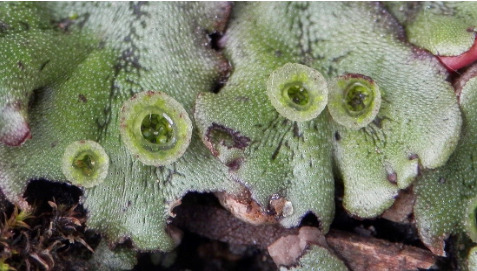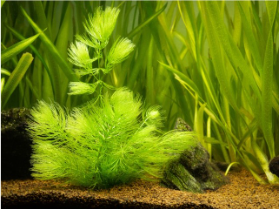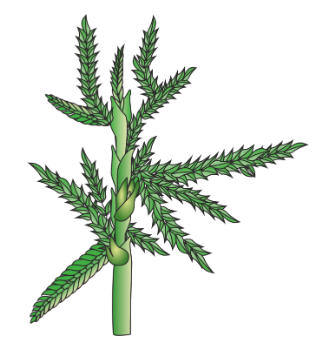Table of Contents
Bryophytes, often referred to as the “amphibians of the plant kingdom,” are a fascinating group of non-vascular plants that play crucial roles in ecosystems and have unique life histories. In this article, we will explore the general characteristics of bryophytes, the reasons behind their amphibious nickname, their reproductive structures, their economic significance, their life cycle, and the division of bryophytes into three distinct groups: liverworts, hornworts, and mosses.
General Characteristics of Bryophytes
Bryophytes represent a diverse group of simple plants that include liverworts, hornworts, and mosses. While they lack the complex vascular tissues found in higher plants, bryophytes share several common characteristics:
- Non-vascular: Bryophytes do not possess specialized tissues for conducting water and nutrients, such as xylem and phloem. Instead, they rely on diffusion for these processes.
- Small Size: Most bryophytes are small in size, typically ranging from a few millimetres to a few centimetres in height.
- Moisture Dependence: Bryophytes require a moist environment for reproduction and nutrient uptake, making them highly sensitive to desiccation.
- Rhizoids: They have structures called rhizoids that anchor them to the substrate and aid in water absorption.
Why Are They Called Amphibians of the Plant Kingdom?
Bryophytes earned their nickname, the “amphibians of the plant kingdom,” due to their dual habitat preferences. They thrive in both terrestrial and aquatic environments, making them adaptable to a wide range of conditions. Bryophytes can colonize land, growing on rocks, soil, or tree trunks, but they are also commonly found in aquatic habitats such as ponds, streams, and wetlands. This adaptability to diverse environments is reminiscent of amphibians, which can inhabit both land and water.
Sex Organs in Bryophytes
Bryophytes exhibit a gametophyte-dominant life cycle, where the haploid gametophyte generation is the dominant phase. They produce male and female sex organs called antheridia and archegonia, respectively. Antheridia release motile sperm cells into the environment, which swim through water to reach and fertilize the non-motile egg cells in the archegonia. This process results in the formation of a diploid zygote, which eventually develops into a sporophyte attached to the gametophyte.
Economic Importance of Bryophytes
Bryophytes have notable economic significance, particularly in the horticultural and ecological fields. Sphagnum moss, a type of peat moss, is one of the most economically valuable bryophytes. It is used extensively in the horticultural industry as a soil conditioner and a medium for growing orchids and other moisture-loving plants. Additionally, Sphagnum is vital in the formation of peatlands, which serve as important carbon sinks and habitats for various wildlife species.
Life Cycle of Bryophytes
The life cycle of bryophytes alternates between haploid (gametophyte) and diploid (sporophyte) generations. This cycle begins with the germination of haploid spores released by the mature sporophyte. These spores develop into multicellular gametophytes, which produce sex organs for fertilization. Upon fertilization, a diploid sporophyte forms and remains attached to the gametophyte until maturity when it releases spores to restart the cycle.
Division of Bryophytes into Liverworts, Hornworts, and Mosses
Bryophytes are divided into three distinct groups:
Liverworts (Hepaticophyta)
Liverworts are one of the oldest known plant groups, with a history dating back over 470 million years. They are named for their liver-shaped thallus (body), which can range from simple flat structures to more complex, lobed forms. Liverworts are found in a variety of habitats, from damp forest floors to rocky outcrops, and they often thrive in moist conditions.

Characteristics of Liverworts:
- Thallus Structure: Liverworts can be classified into two main types based on thallus structure: thallose and leafy. Thallose liverworts have a flattened, ribbon-like appearance, while leafy liverworts have small, leaf-like structures.
- Reproduction: They reproduce both sexually and asexually. In sexual reproduction, liverworts produce specialized structures called archegonia (female) and antheridia (male) to facilitate fertilization. Asexual reproduction can occur through gemmae cups, small structures that release genetically identical gemmae.
- Ecological Role: Liverworts play crucial roles in ecosystem function. They help stabilize soils, retain moisture, and provide habitats for microorganisms and invertebrates.
Hornworts (Anthocerotophyta)
Hornworts are a relatively small and less-studied group of bryophytes compared to liverworts and mosses. They are named for their unique sporophyte structure, which resembles elongated, horn-like structures emerging from the thallus. Hornworts are often found in damp, shaded areas, and they can colonize a wide range of substrates.

Characteristics of Hornworts:
- Sporophyte Structure: The sporophytes of hornworts are distinctive and continuous with the thallus. They grow as slender, elongated structures and are often covered by a sheath of cells. This unique sporophyte morphology sets hornworts apart from other bryophytes.
- Nitrogen-Fixing Symbiosis: Many hornworts have a symbiotic relationship with cyanobacteria, which can fix atmospheric nitrogen. This ability to access atmospheric nitrogen makes hornworts important contributors to soil fertility.
- Habitat: Hornworts thrive in moist environments and can be found in a variety of habitats, from forest floors to moist rocks and stream banks.
Mosses (Bryophyta)
Mosses are perhaps the most recognizable and diverse group of bryophytes, with over 12,000 known species. They are commonly found in both terrestrial and aquatic environments and are known for their leafy gametophytes, which often form dense mats or cushions in a variety of ecosystems.

Characteristics of Mosses:
- Leafy Gametophytes: Mosses have leafy structures that make up the dominant part of their life cycle. These structures can vary widely in shape, size, and colour, contributing to the rich diversity of moss species.
- Spore Capsules: Mosses produce spore capsules at the tips of specialized stalks called setae. When mature, these capsules release spores into the environment, allowing for the dispersal of new generations.
- Ecological Significance: Mosses are ecologically significant for several reasons. They play roles in soil formation, erosion control, and carbon storage. Additionally, they provide important microhabitats for a variety of small organisms.
Conclusion
Bryophytes, the amphibians of the plant kingdom, may be small and often overlooked, but they play vital roles in ecosystem dynamics, carbon sequestration, and horticulture. Understanding their general characteristics, unique reproductive cycle, and economic importance, especially the versatile Sphagnum moss, allows us to appreciate the significance of these remarkable non-vascular plants in our world. The division of bryophytes into liverworts, hornworts, and mosses showcases the diversity within this group, highlighting their resilience and adaptability to various environments.
Frequently Asked Questions on Bryophytes
What are bryophytes?
Bryophytes are a group of non-vascular plants that lack specialized tissues for water and nutrient transport. They include mosses, liverworts, and hornworts.
What are the general characteristics of bryophytes?
Bryophytes typically have small, non-vascular bodies, require moisture for reproduction, and possess rhizoids for anchoring. They also exhibit a dominant gametophyte generation.
Why are bryophytes called the amphibians of the plant kingdom?
Bryophytes earned this nickname because they can thrive in both terrestrial and aquatic environments, resembling amphibians that can live on land and in water.
What is the ecological significance of bryophytes?
Bryophytes help stabilize soil, retain moisture, provide habitats for microorganisms and invertebrates, and contribute to carbon sequestration in peatlands.
How do bryophytes reproduce?
Bryophytes reproduce both sexually and asexually. Sexual reproduction involves the formation of male (antheridia) and female (archegonia) sex organs. Asexual reproduction can occur through gemmae or fragmentation.
What is the economic importance of bryophytes?
Bryophytes, particularly Sphagnum moss, are used in horticulture as a soil conditioner and growing medium. Sphagnum also plays a crucial role in forming peatlands, which act as carbon sinks.
What is the life cycle of bryophytes?
Bryophytes exhibit an alternation of generations life cycle. It involves a haploid (gametophyte) dominant phase that produces gametes and a diploid (sporophyte) phase that releases spores.









